Four minutes on the clock and Liverpool have the first goal kick of the game. Thirteen passes later and Liverpool have scored the first goal of the game, too. That passage of play proved to be yet another example, both with and without the ball, of the chasm between these two teams.
Manchester United had three goal kicks inside the opening 25 minutes. David de Gea kicked two balls straight out of play — Jurgen Klopp, Liverpool’s manager, had to take cover on one of them — and on the third occasion, when United tried to play out from the back, it was car-crash football. If we’re being generous, United managed three complete passes across those three restarts.
Advertisement
United looked what they are — a broken team with no discernible method and an alarming lack of courage (that includes in possession), desire and fight, let alone a lack of quality. Perhaps on that basis, De Gea can be forgiven for thinking that the best strategy from goal kicks is to get the ball as far away from the United goal as possible.
Liverpool took a different route when Alisson placed the ball for a goal kick. They cut through United with embarrassing ease via a combination of patience, trust, positioning and a perfectly executed passing-and-movement pattern that continues to reap huge rewards for Klopp’s players.
The first goal starts with Alisson playing a square pass to Trent Alexander-Arnold, whose deep starting position ensures he will get a “free” pass. United have a three-man press — albeit the word “press” is generous here.
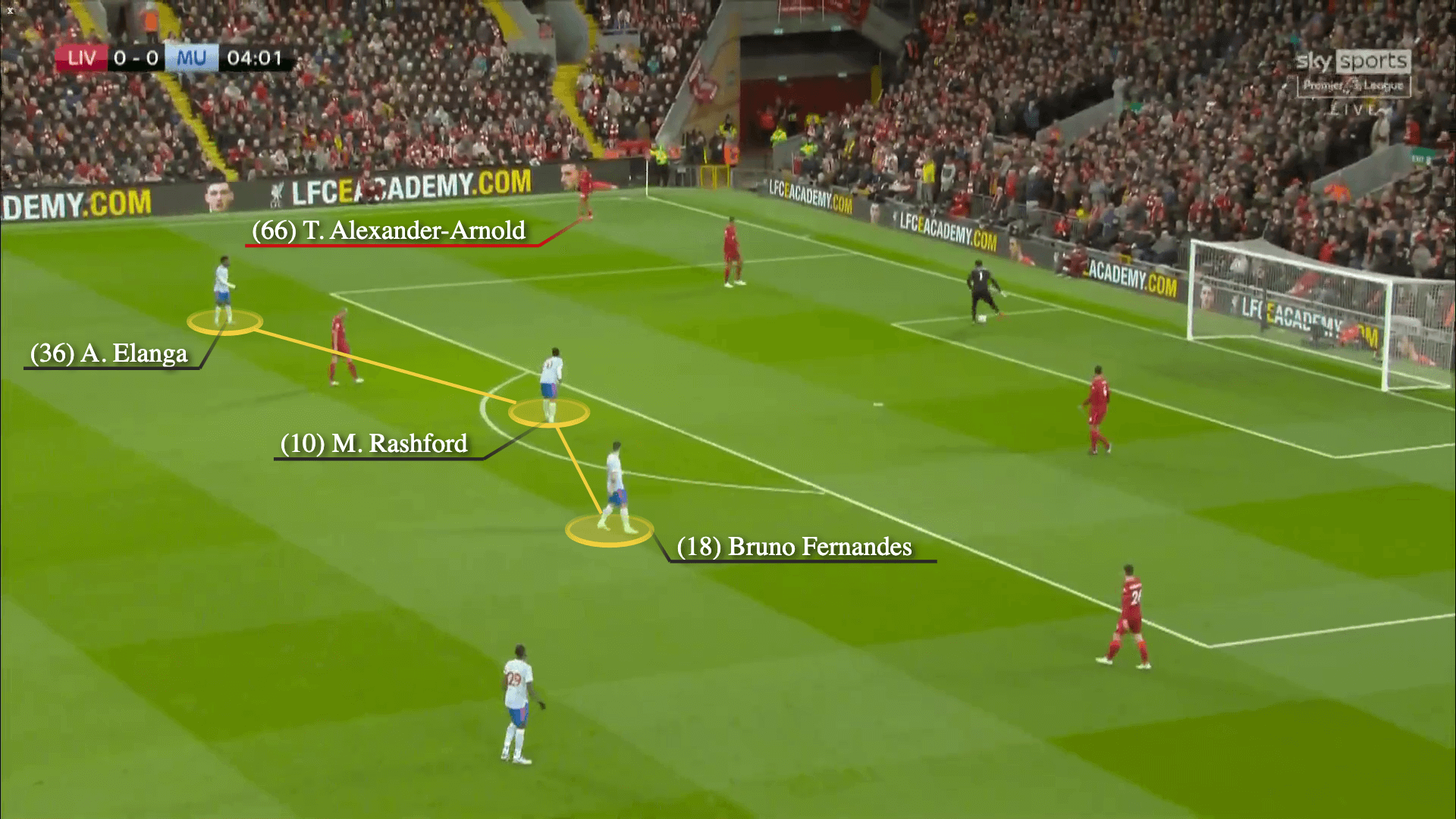
Alexander-Arnold passes to Joel Matip, who steps out with the ball almost in the hope that a United forward will come towards him and that he can then commit that player by passing to Thiago. United’s players stand their ground, though — this is clearly a tactic and it is understandable. They are trying to prevent Liverpool from playing through them and “getting out” via a pass. For that to work, the three United players have to get their distances right.
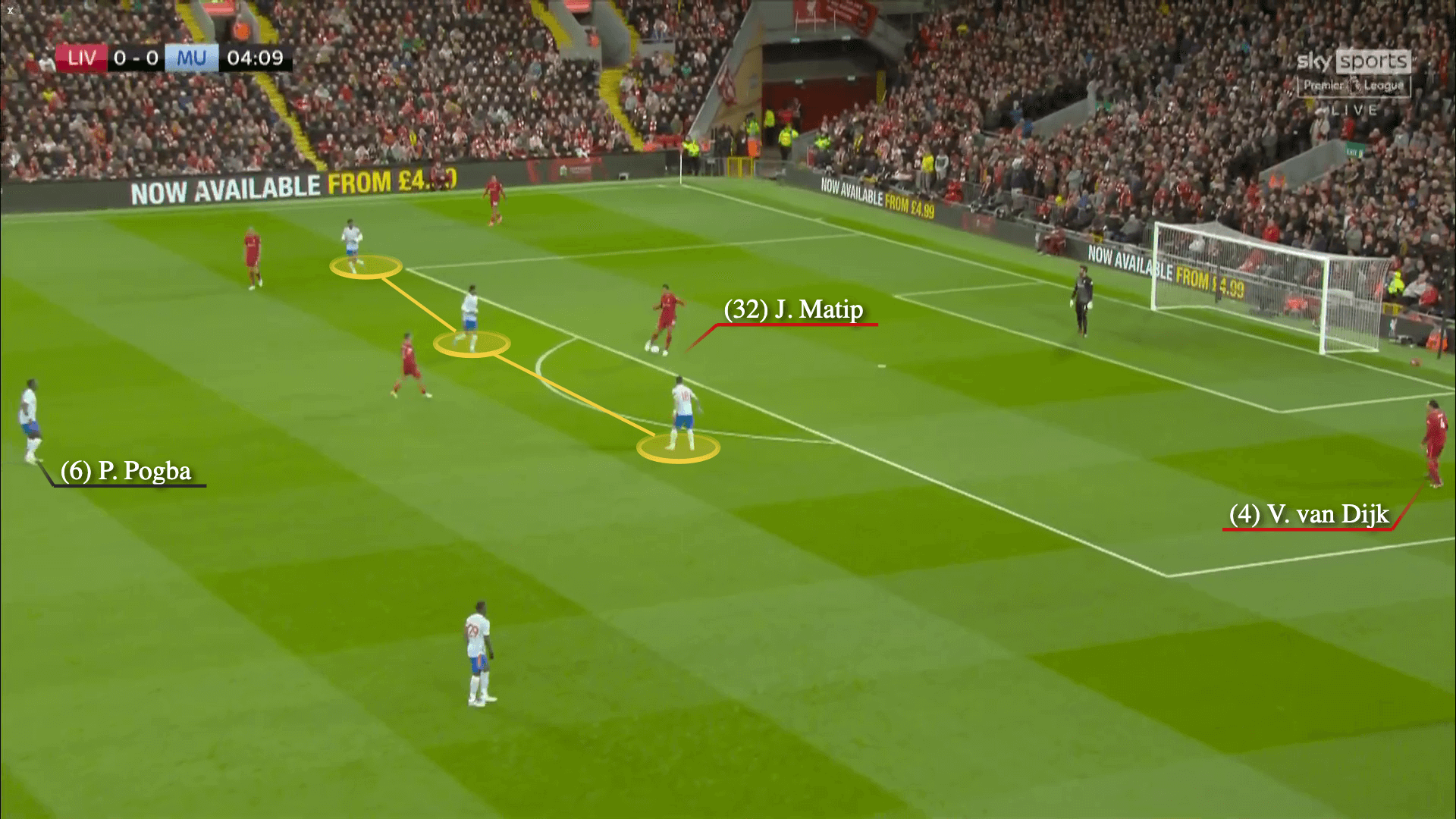
Matip ends up playing the ball to Virgil van Dijk, who goes back to Alisson. At this point, Bruno Fernandes decides to chase Alisson. It is unclear why he makes that decision but, in truth, typical of both United and Fernandes who often presses individually — that sort of running can look good, but it is pointless unless team-mates are on the same page and pressing collectively. Alisson could, and arguably should, take advantage of Fernandes going rogue by playing a ball into Thiago and Liverpool would be “out”.

Instead, Alisson takes a heavy touch, gets away with it and then passes to Van Dijk, who feeds the ball into the feet of Thiago.

Thiago turns back inside and passes to Matip and it is remarkable — damning, from United’s point of view — that Liverpool get out so easily. Paul Pogba is doing a good job of marking nobody, and Anthony Elanga has tucked inside to deal with Fabinho — a player he wouldn’t need to worry about if Fernandes retreated a couple of yards and positioned himself to stop that pass. Matip feeds the ball to Alexander-Arnold and Liverpool are on the attack.

What happens next is trademark Liverpool — creating triangles on either side of the pitch involving a full-back, a No 8 and a wide attacker. In this case, it is Alexander-Arnold, Jordan Henderson and Mohamed Salah. Henderson can see the pattern developing now — Alexander-Arnold is running forward with the ball but the Liverpool captain is moving in the opposite direction to be at the base of the triangle and take up a position that will allow Salah to “set” the ball to him.
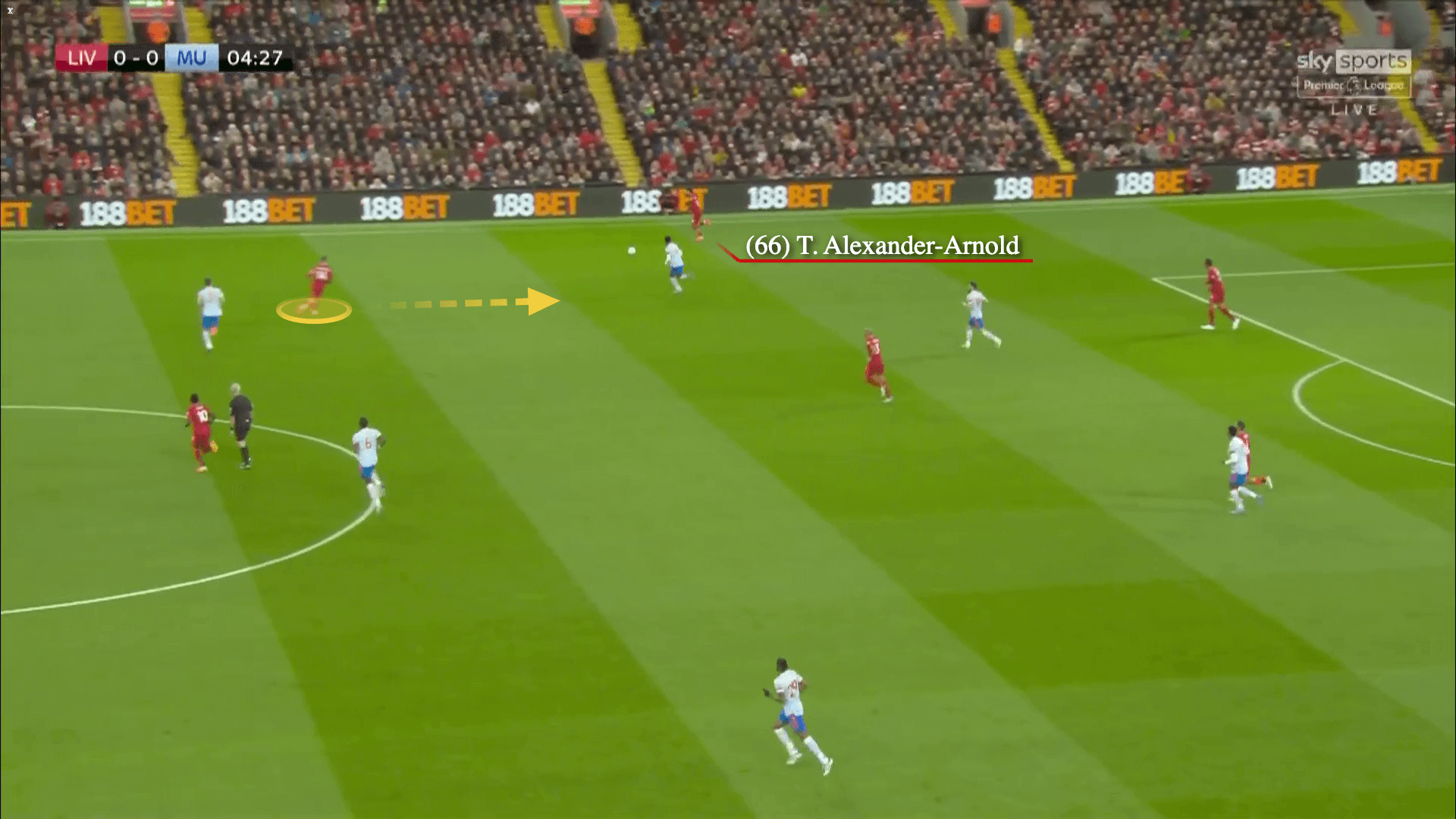
You can see that Liverpool triangle below. Salah, back to goal, is just about to receive the ball from Alexander-Arnold. Salah lays it off for Henderson, whose deeper positioning allows him to play first time into the feet of Sadio Mane, who is free.
Klopp gives the players total freedom to take up whichever position they wish to in that shape; in other words, occupying the three positions is far more important than anyone having a designated role.

As for Pogba, he is now picking up Martin Atkinson, the referee.
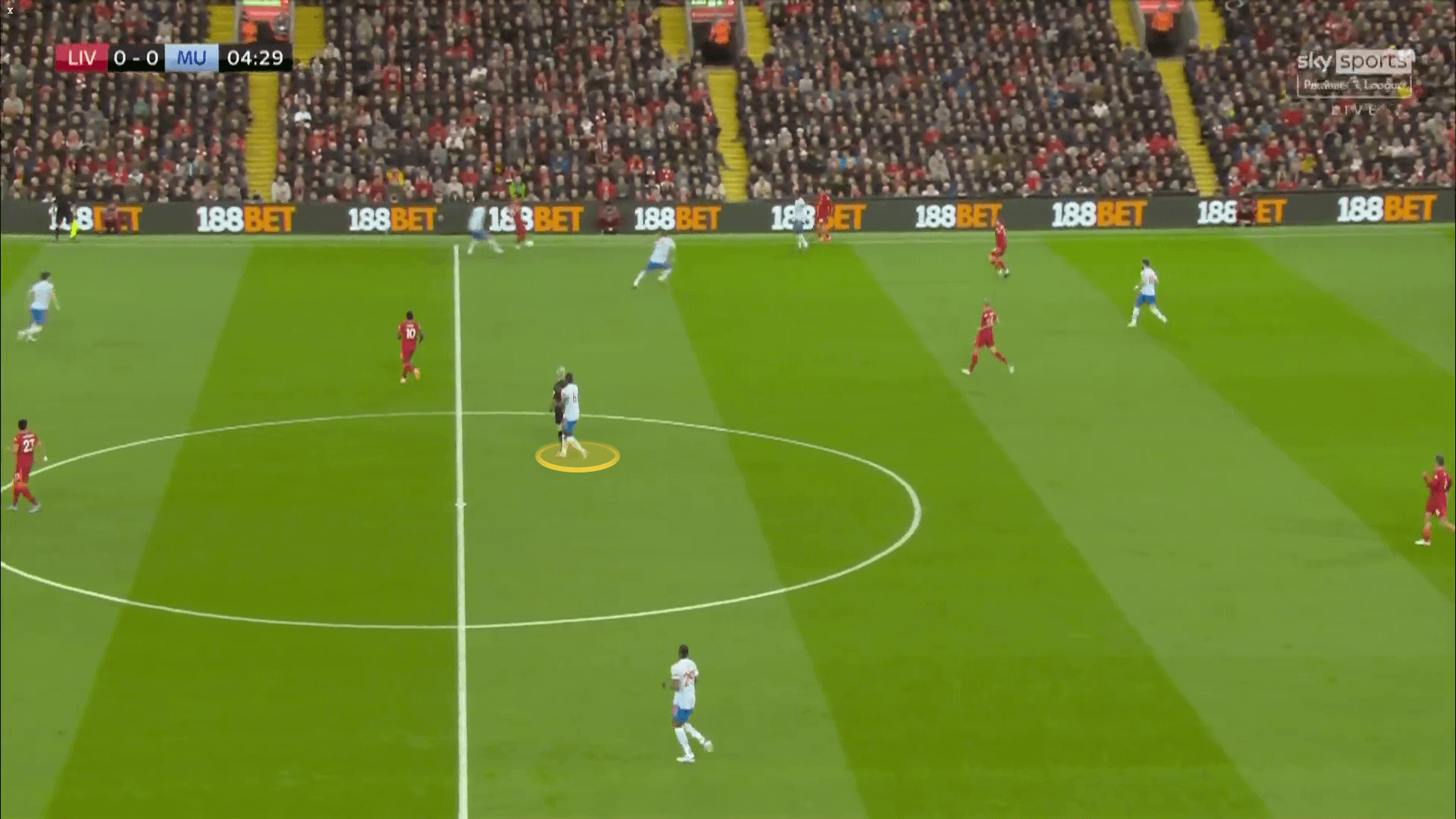
The next photo says so much about both Liverpool and United, and why they are moving in different directions in every sense. Salah’s backwards pass is the trigger for him and Alexander-Arnold to sprint forward for the ball after next — a third-man run-in behind. At this point, Diogo Dalot (No 20) is goal side of Salah (circled) and Elanga is goal-side of Alexander-Arnold (also circled), but that won’t be the case for long.

The ball has only just got to Mane but Alexander-Arnold already has gained six or seven yards on Elanga — that’s not about speed, it’s about desire. Salah on the outside of him is ahead of Dalot, too.
As for Mane, he can get the ball on the halfway line and turn because Harry Maguire is caught in two minds — the United captain doesn’t know whether to drop off and protect the space in behind him or get tight to Mane and prevent the Liverpool forward from turning and playing forward. In the end, Maguire does neither and ends up in no man’s land, which is pretty much where Pogba spent his 10 minutes on the pitch.

Liverpool didn’t win one race down the right flank here, they won two — Salah and Alexander-Arnold are competing harder with one another for the same ball than any United player is competing with them.

As for Luis Diaz, if you were wondering how he ended up being free too, Victor Lindelof chose to try to step up to play offside when Mane released the ball to Salah.

As a final note on this goal, it may seem a bit harsh to question why Elanga, a forward, didn’t do more to track Alexander-Arnold, or for that matter to shine a light on the defensive duties of any of United’s other attacking players.
Below, however, is an example of what happened on a rare occasion when the tables were turned. This is an incident in the first half, Liverpool are leading 2-0 and United are breaking on their left flank. Mane, circled, is Liverpool’s striker, not even a wide attacker. He could let Aaron Wan-Bissaka run. Or he could pass him onto Andrew Robertson. Instead, he sprints back to defend…
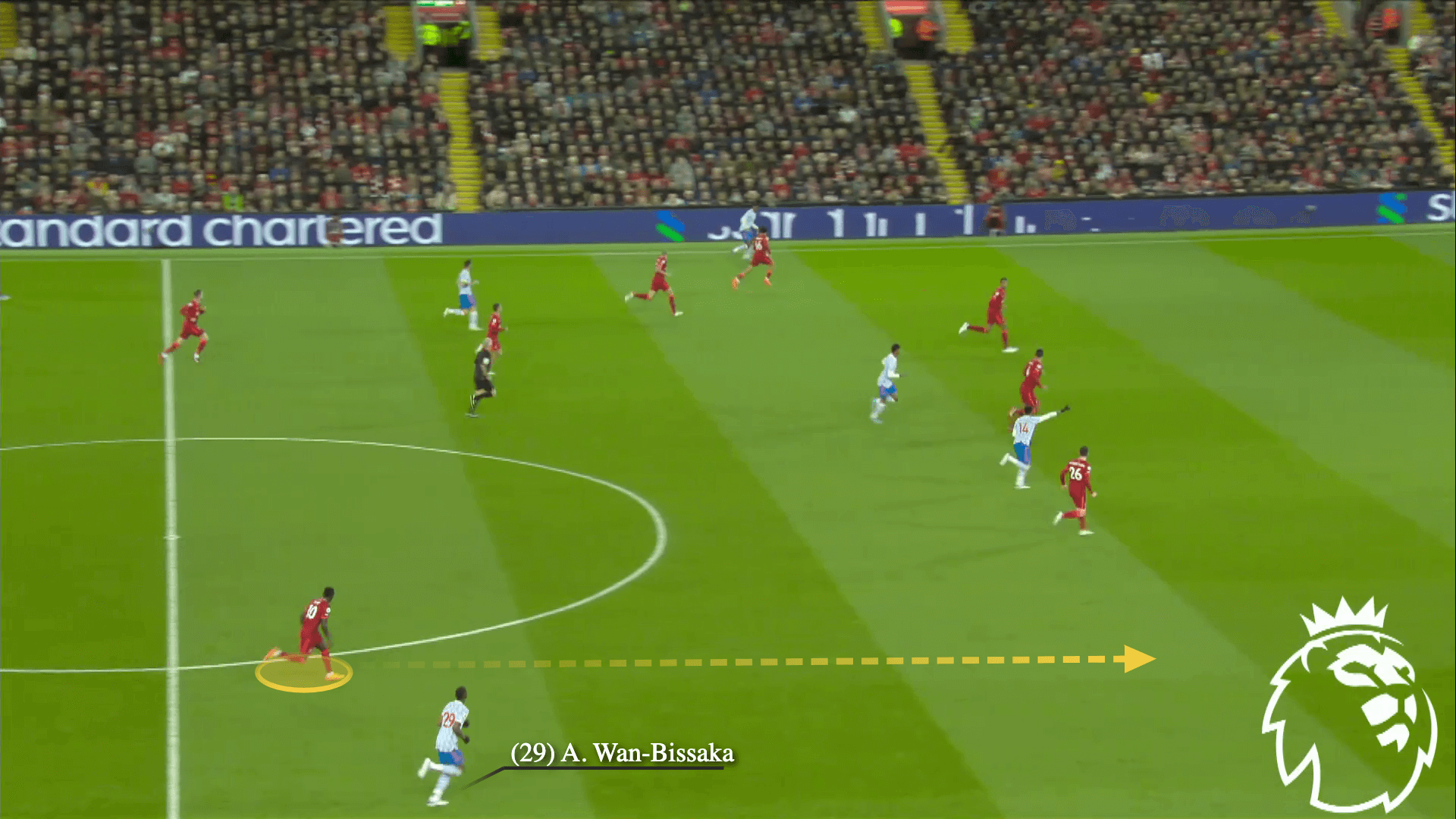
…beats Wan-Bissaka to the overhit cross through a combination of speed, strength and determination…

…and wins his team a throw-in.

So, what, in contrast, does a Manchester United goal kick look like?
We found out the answer to that question four minutes after Liverpool opened the scoring. Maguire and Phil Jones are stationed in the penalty area waiting to receive but neither defender really looks like they want to play out against Liverpool’s three-man press. De Gea, arms outstretched, wonders what to do next.
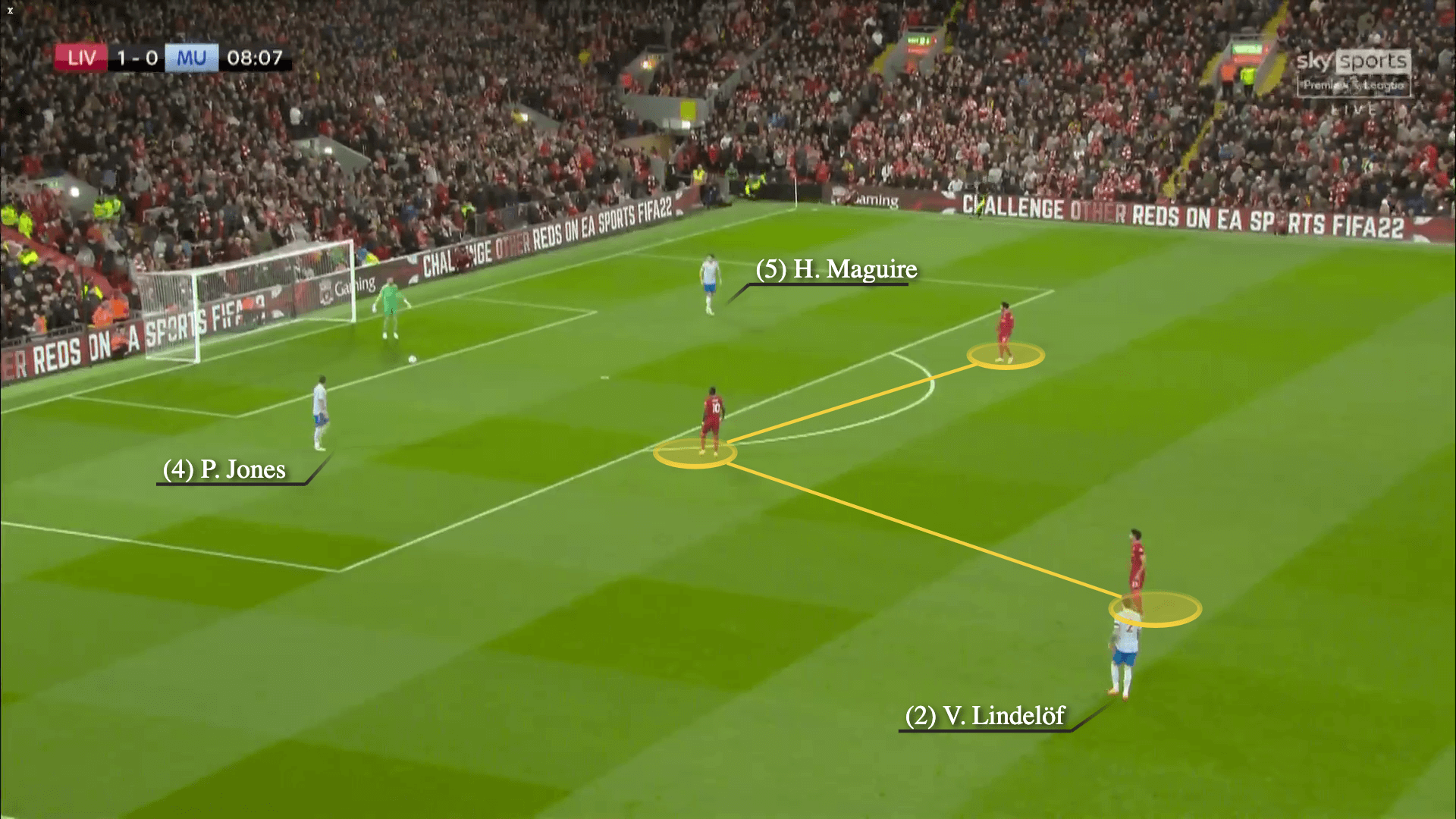
The goalkeeper kicks long and aims for Wan-Bissaka, United’s right wing-back.

The ball sails straight out of play and United have handed possession back to Liverpool.

Three minutes later and United have another goal kick. It’s the same format — Maguire and Jones are in a position to receive a “free” pass inside their penalty area… with, on the face of it, little intention to receive. Indeed, Maguire is quickly pointing for another ball to be arrowed out to the right.

De Gea weighs up his options, looks left for a moment, Maguire keeps walking forward — there is no chance of playing out now — and the United keeper does the same thing again.
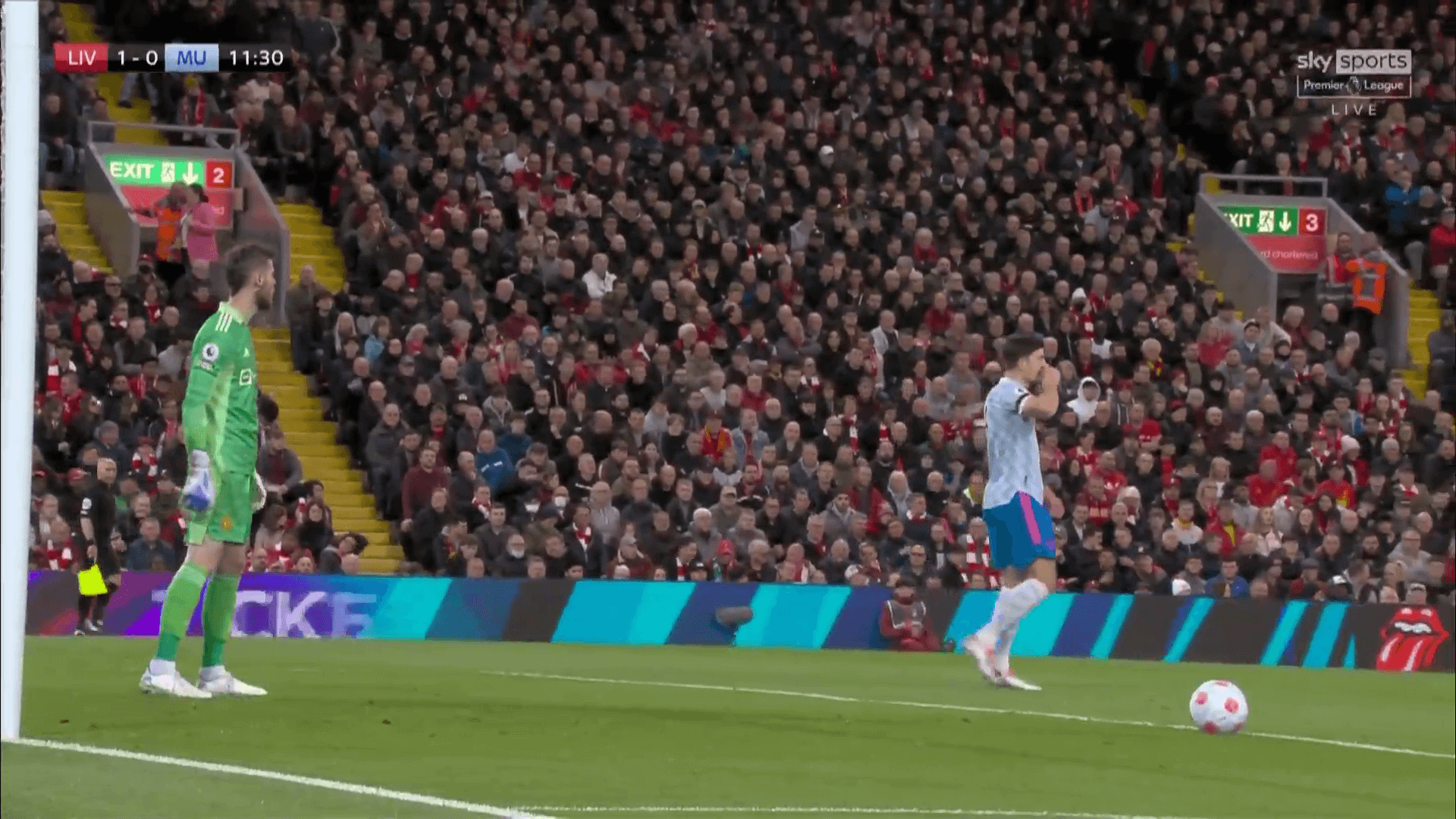
Another long diagonal towards Wan-Bissaka…
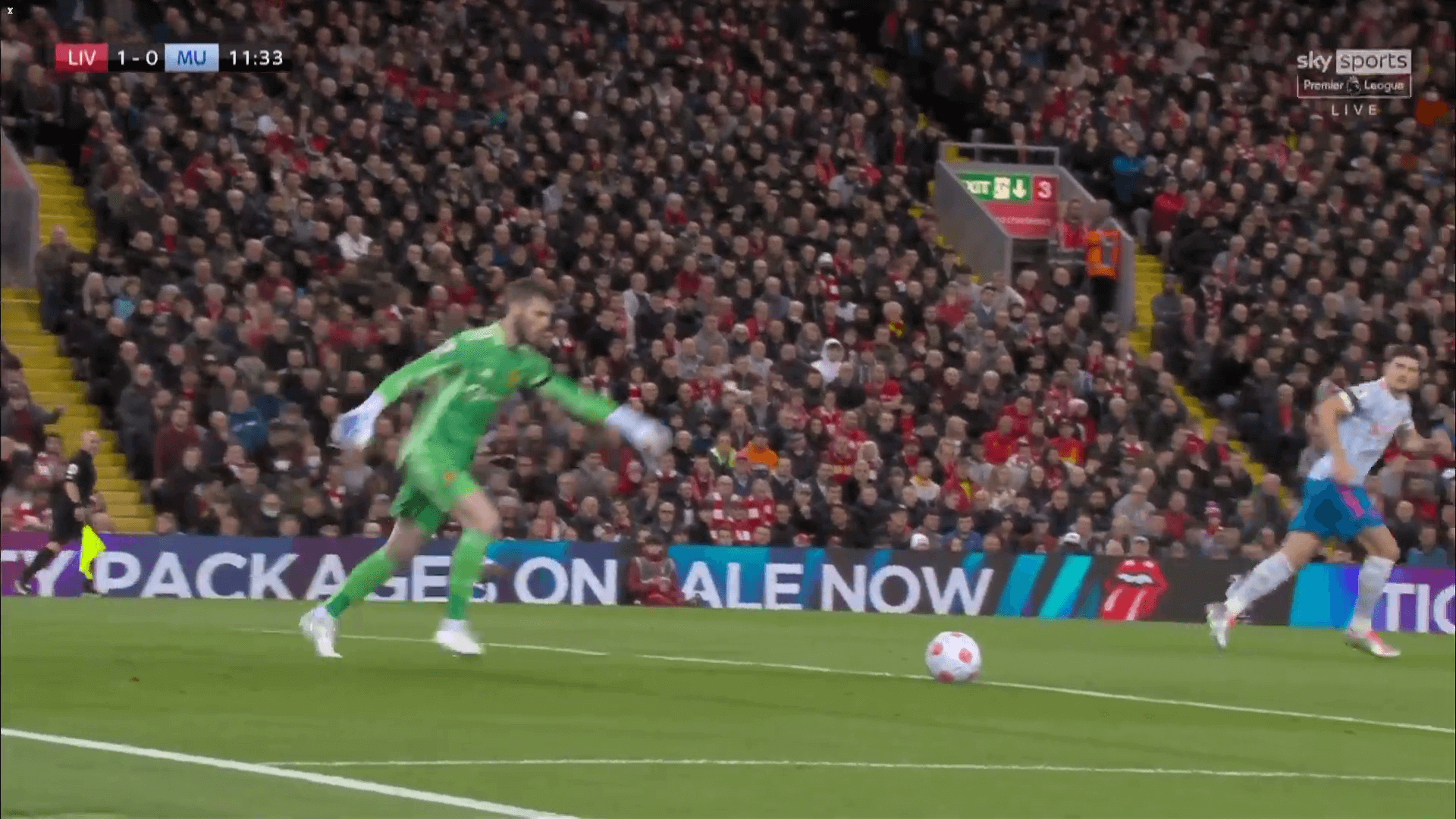
… and the same outcome. Klopp, looking like a spectator on a golf course ducking to avoid a wayward tee shot, has to take evasive action. Is this — trying to hit Wan-Bissaka on the halfway line — really what a Manchester United goal kick looks like in the year 2022?

Maybe it was for the best. On United’s third goal kick, they tried to play out and it was a disaster. Liverpool, of course, are outstanding at pressing, as Manchester City found out on Saturday in the FA Cup semi-final. That said, United really didn’t help themselves at Anfield, so much so that it is uncomfortable to watch this phase of play unfold.
Advertisement
Liverpool have committed five players to press, with their narrow positioning cutting off the ball into United’s two midfielders, Fernandes and Nemanja Matic. Indeed, those five Liverpool players are tucked in so far, especially Diaz and Henderson on either side of Thiago, that it feels as though they are setting a trap here to force their opponents to play wide, safe in the knowledge that United are not equipped to play out from the back under pressure.
United have seven players in the picture below, so they are outnumbering Liverpool, although it doesn’t feel like that from the moment that the ball is live and De Gea passes to Jones.

The ball has just left Jones’ right boot below and all five Liverpool players are pressing — aggressively.
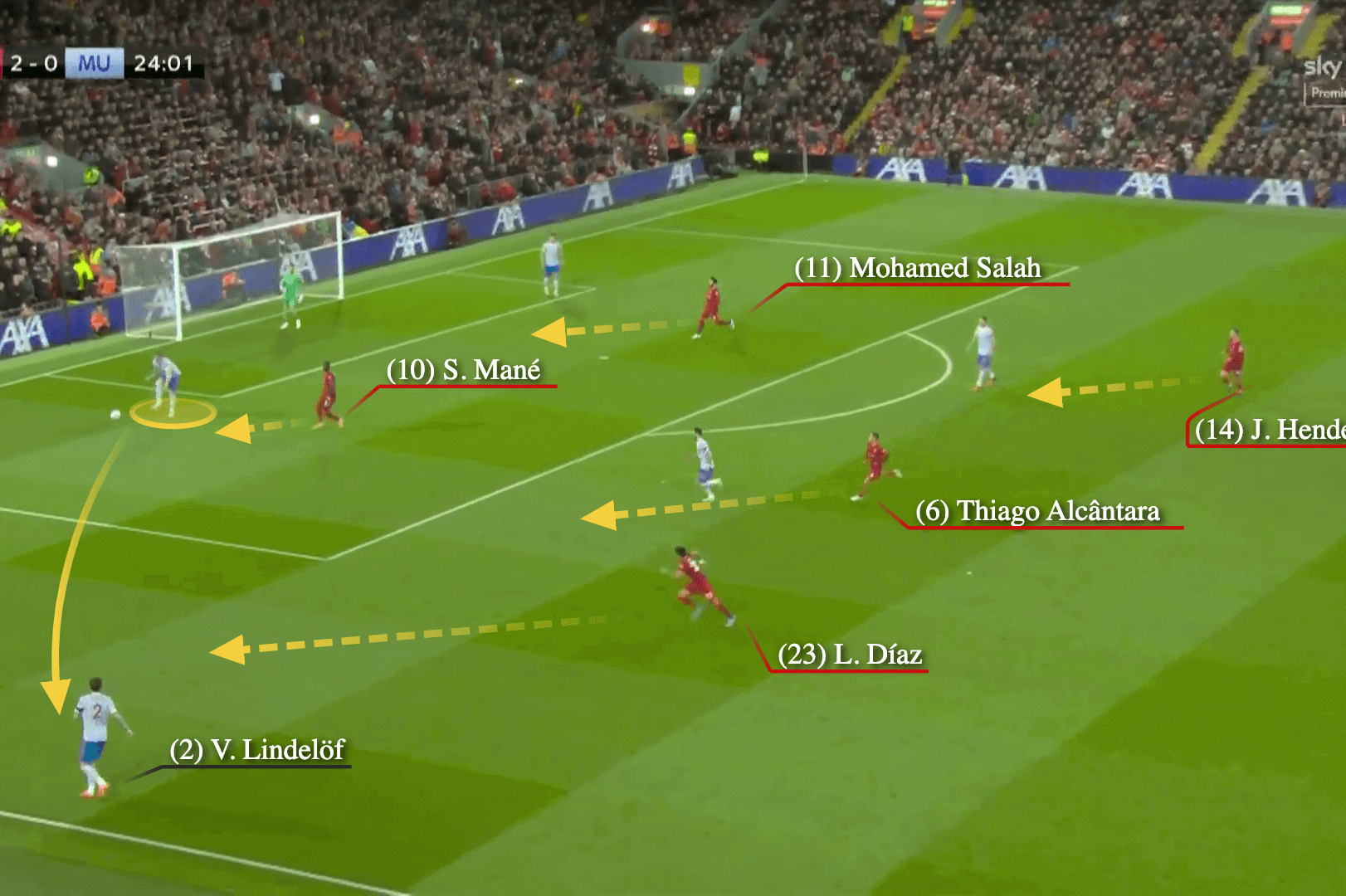
Lindelof chooses to receive with his body position closed — something that United defenders do over and again (nobody more so than Maguire) — rather than letting the ball run across him and playing down the line and now Rangnick’s team are in big trouble. Liverpool’s five-man press has smothered them and Lindelof has only one pass available after taking the ball back inside with his right foot — a telegraphed short pass inside to Fernandes.

Diaz is almost undetectable in the picture below because he is so tight to Lindelof. As for Thiago, circled, he will soon be all over Fernandes.

Thiago takes the ball off the United midfielder as easily as a parent takes sweets from a child. Seven seconds and two United passes (three if we are generous and say that Lindelof’s pass did actually get to Fernandes before Thiago pinched it) and Liverpool have won the ball back in line with United’s penalty area.
Restarts in football are controllable. Yet United’s players continue to look like they make everything up as they go along.
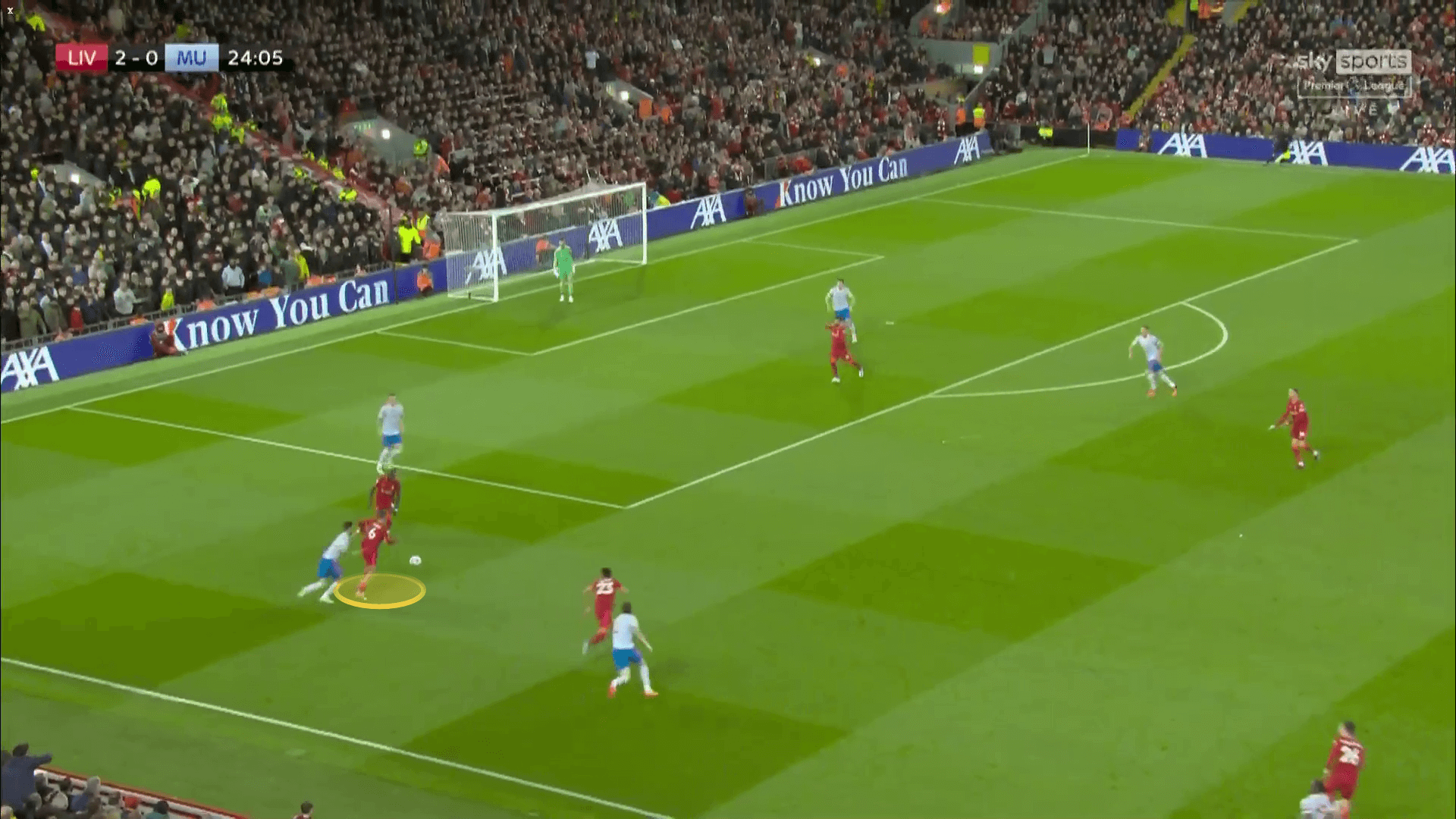
For Liverpool, on the other hand, everything looks so natural and free-flowing, and never more so than in the lead up to their second goal.
Fabinho, Thiago, Robertson, Thiago, Alisson, Matip, Alisson, Matip, Alexander-Arnold, Fabinho, Salah, Henderson, Robertson, Thiago, Salah, Henderson, Alexander-Arnold, Henderson, Fabinho, Henderson, Matip, Diaz, Matip, Mane, Salah: 25 passes, 75 seconds of possession, one sumptuous goal.
Diaz, circled below, picking up possession 30 yards from the United goal before passing to Fabinho was the start of it all.
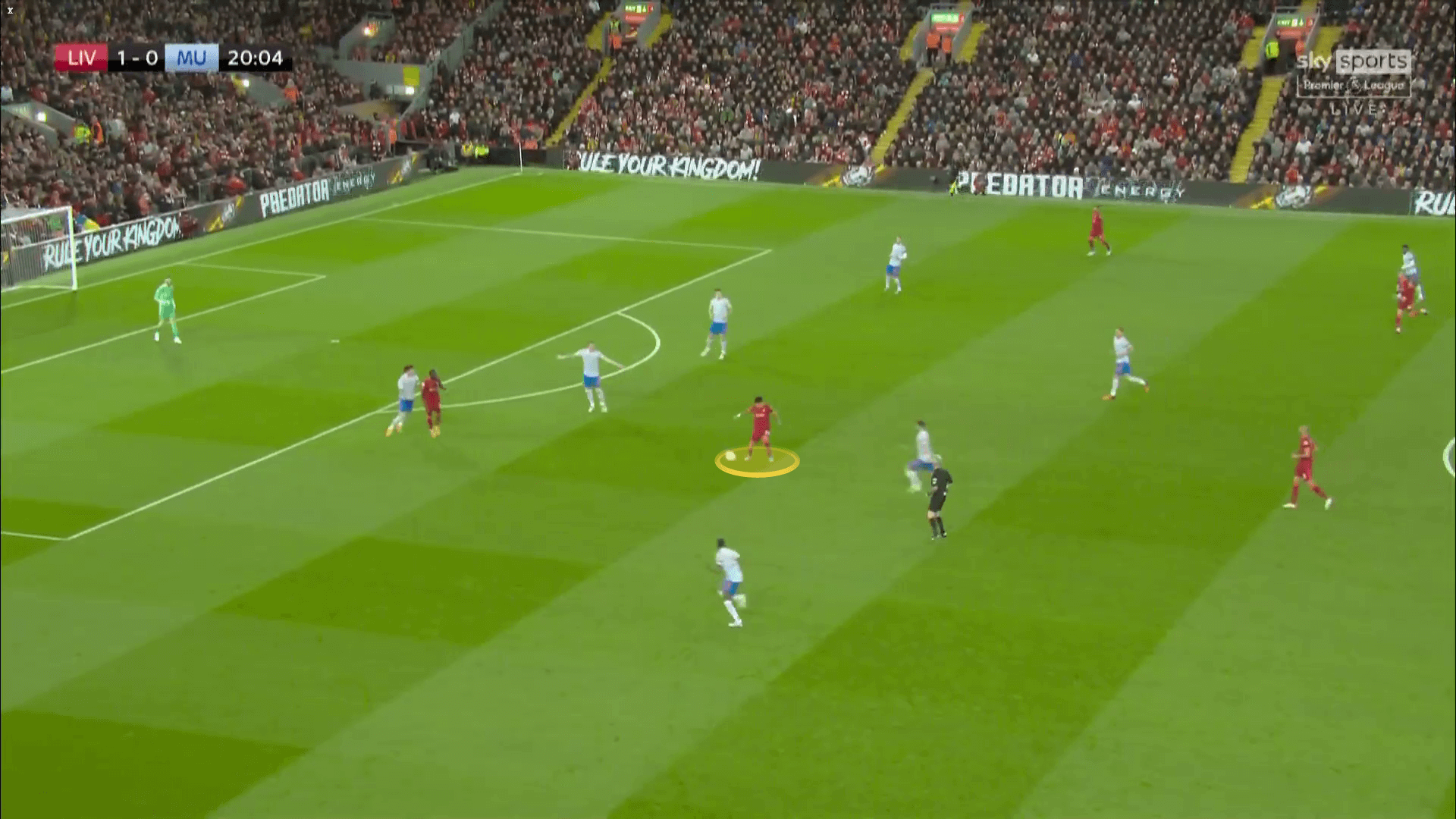
Liverpool went all the way back to Alisson — it felt as if they were toying with United — before forming those triangles on the right again. Henderson, close to the far touchline, is the most advanced Liverpool player in the image below. Alexander-Arnold, drifting inside and much more of a No 8 in terms of his positioning, which is typical of how he has played for so much of this season, knows that he has to break into the space in front of him to create the triangle with Salah, who is in possession, and Henderson.

You can see that trio of Liverpool players below.
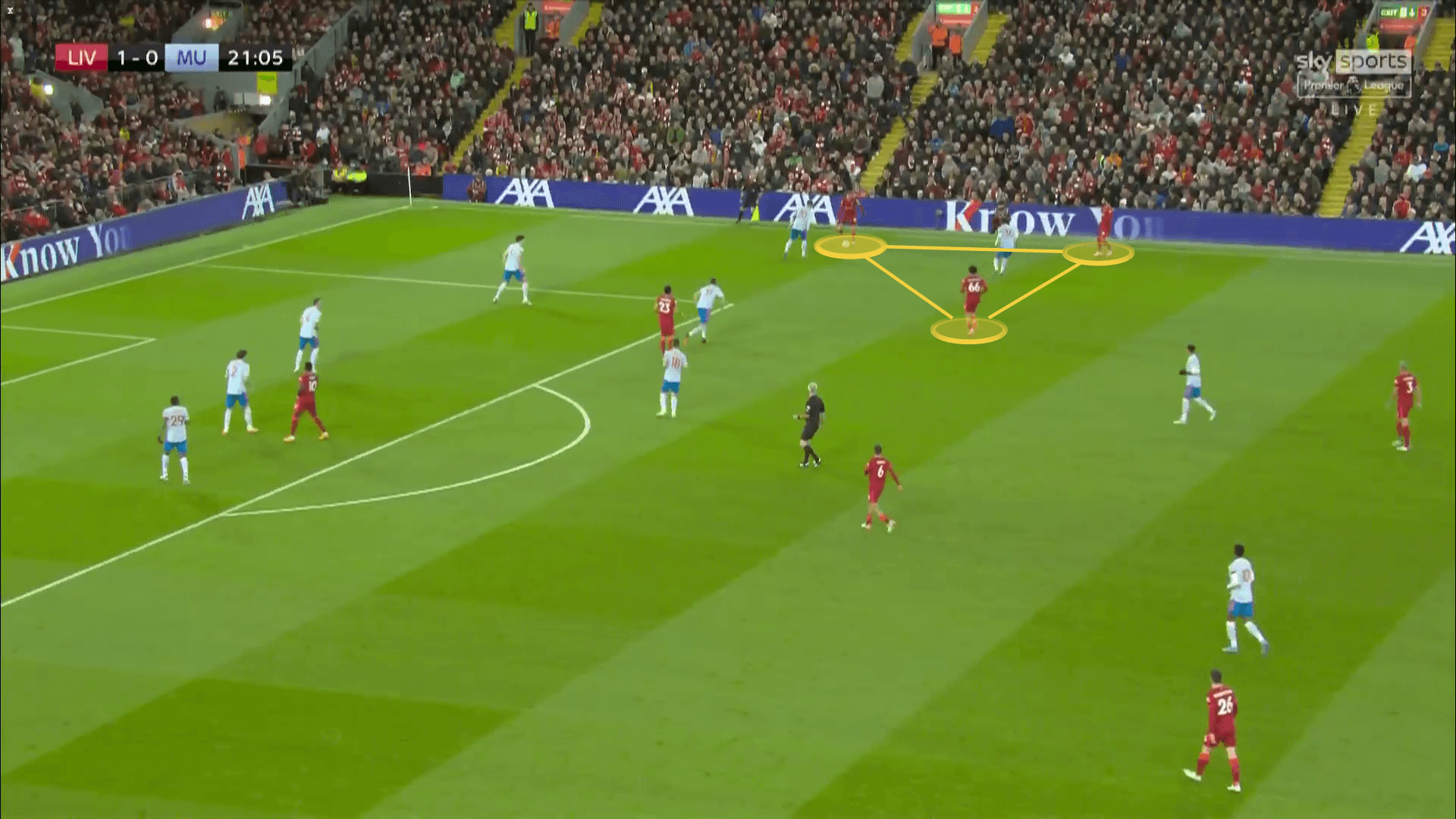
Three seconds later and all three have swapped passes and rotated one position, leaving United chasing shadows.

Mane’s pass at the end of it all is a thing of beauty. Yet it is also easy to overlook the contribution of Matip, who took four United players out of the game by punching a superb first-time ball into the feet of Mane. If Matip had taken a touch when Diaz laid it back to him — and that would have been easy to do because the Colombian’s pass came at him quickly, giving him little time to think and see what was around him — Liverpool would have needed to build the attack again. Instead, Matip played an incisive and intelligent pass.
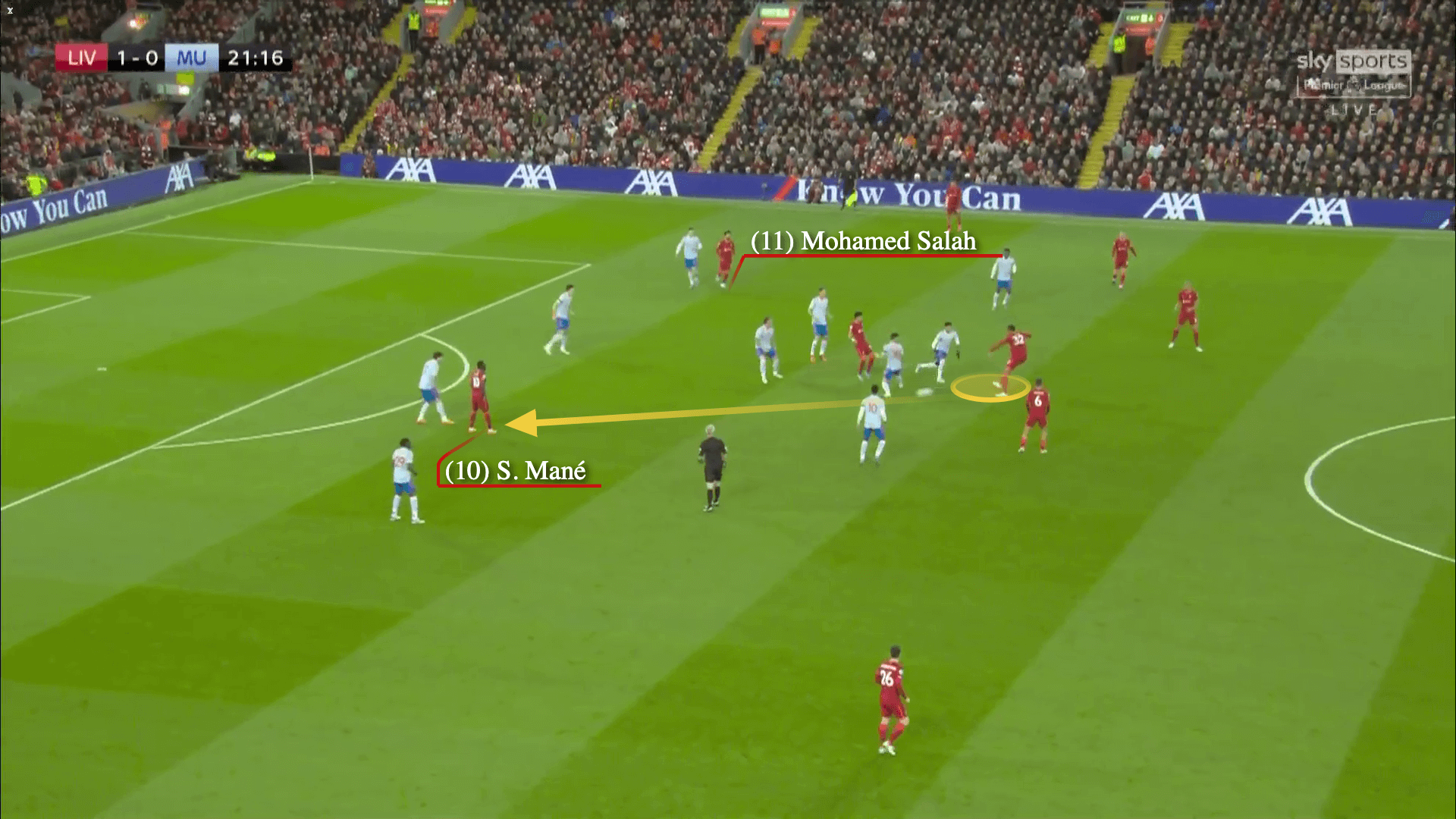
What followed was sensational.
United will rue the fact that Dalot was on his heels and caught ball-watching, but Salah deserves credit for being so quick to get on the inside of the defender.
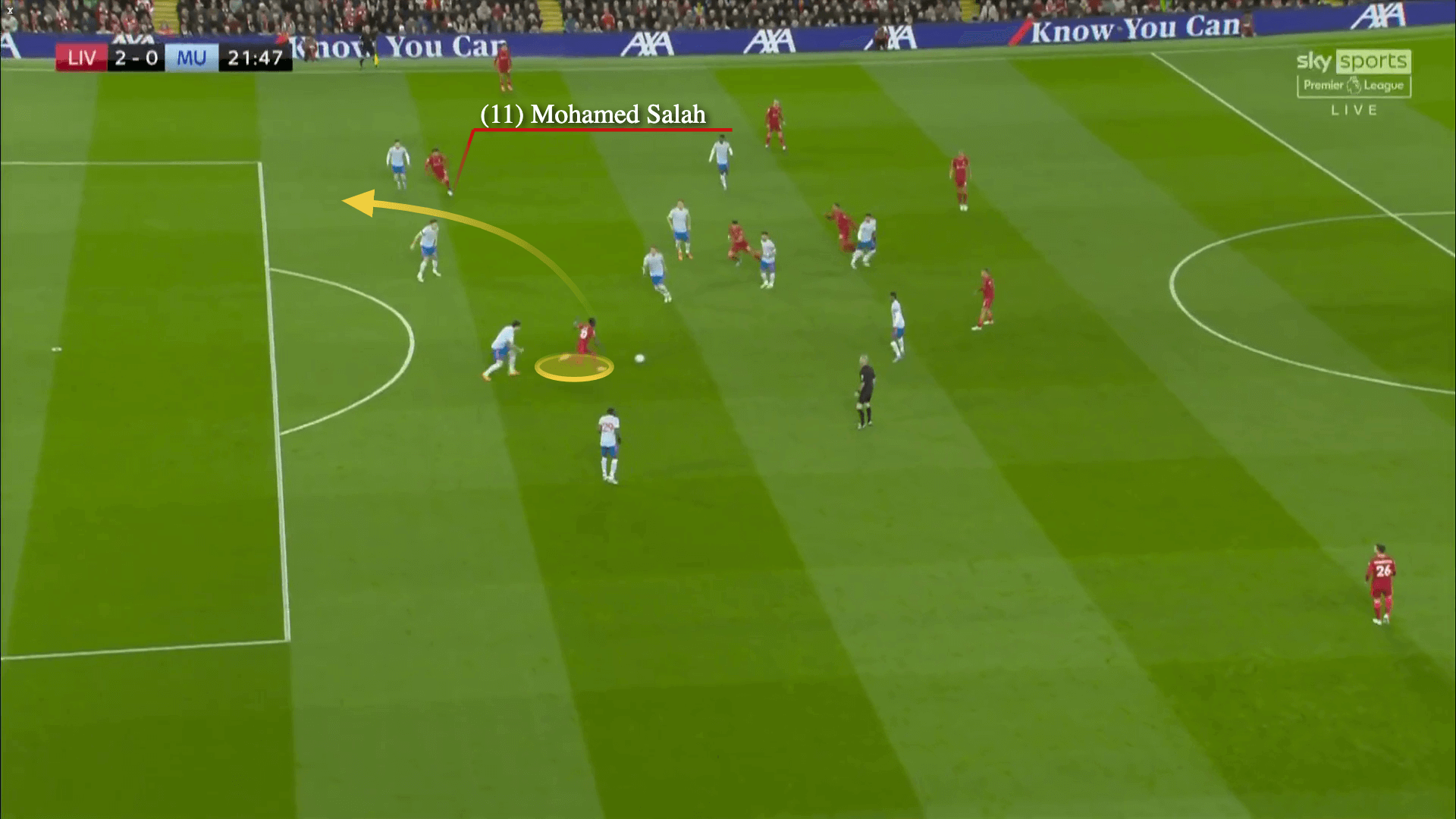
As for Mane, his awareness and technique to execute that reverse pass were outstanding.
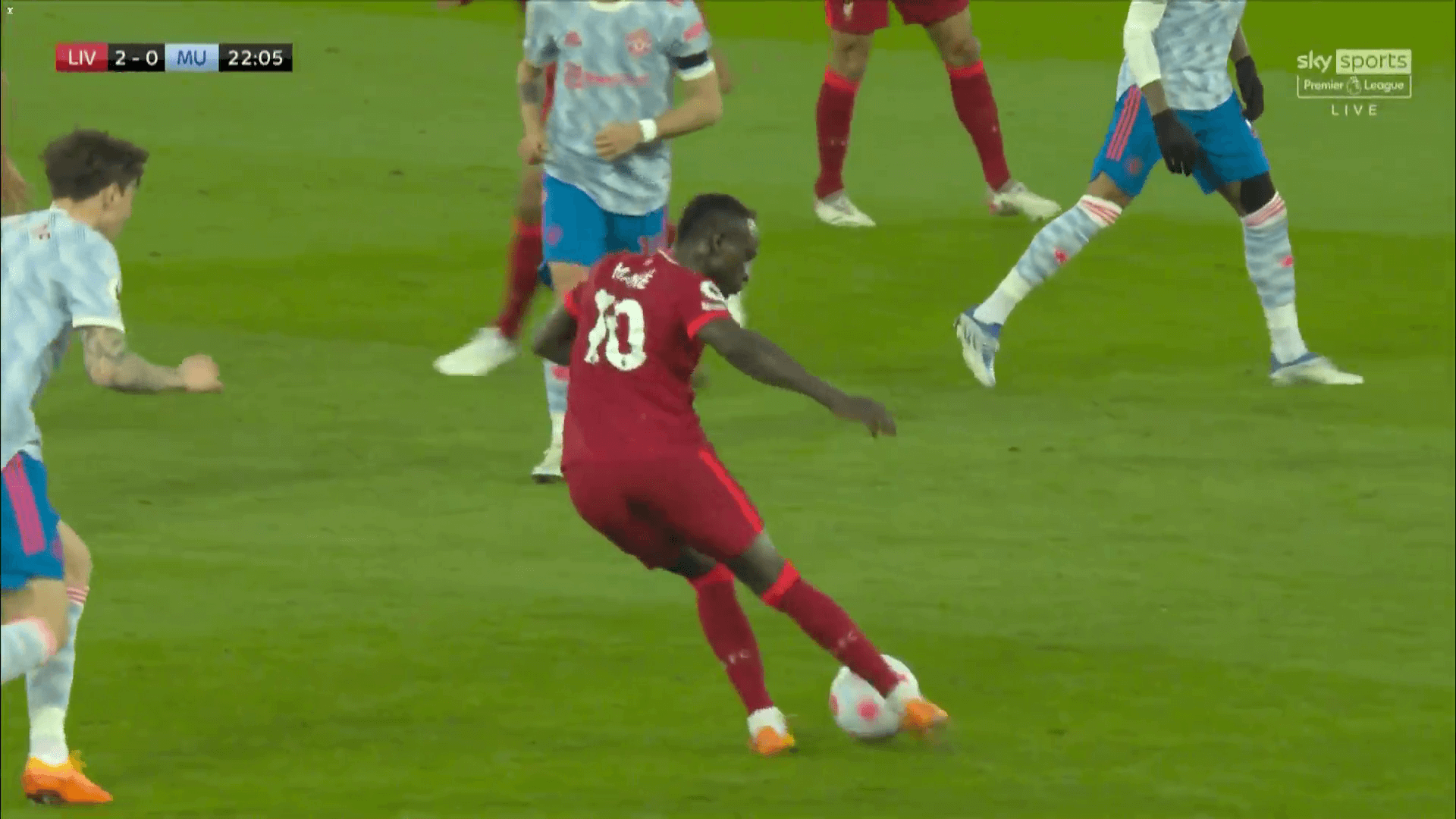
You can spend a long time looking at the picture below — and none of it will be wasted.

Salah did the rest and United, not for the first time this season, were exposed as being horribly out of their depth against Liverpool.
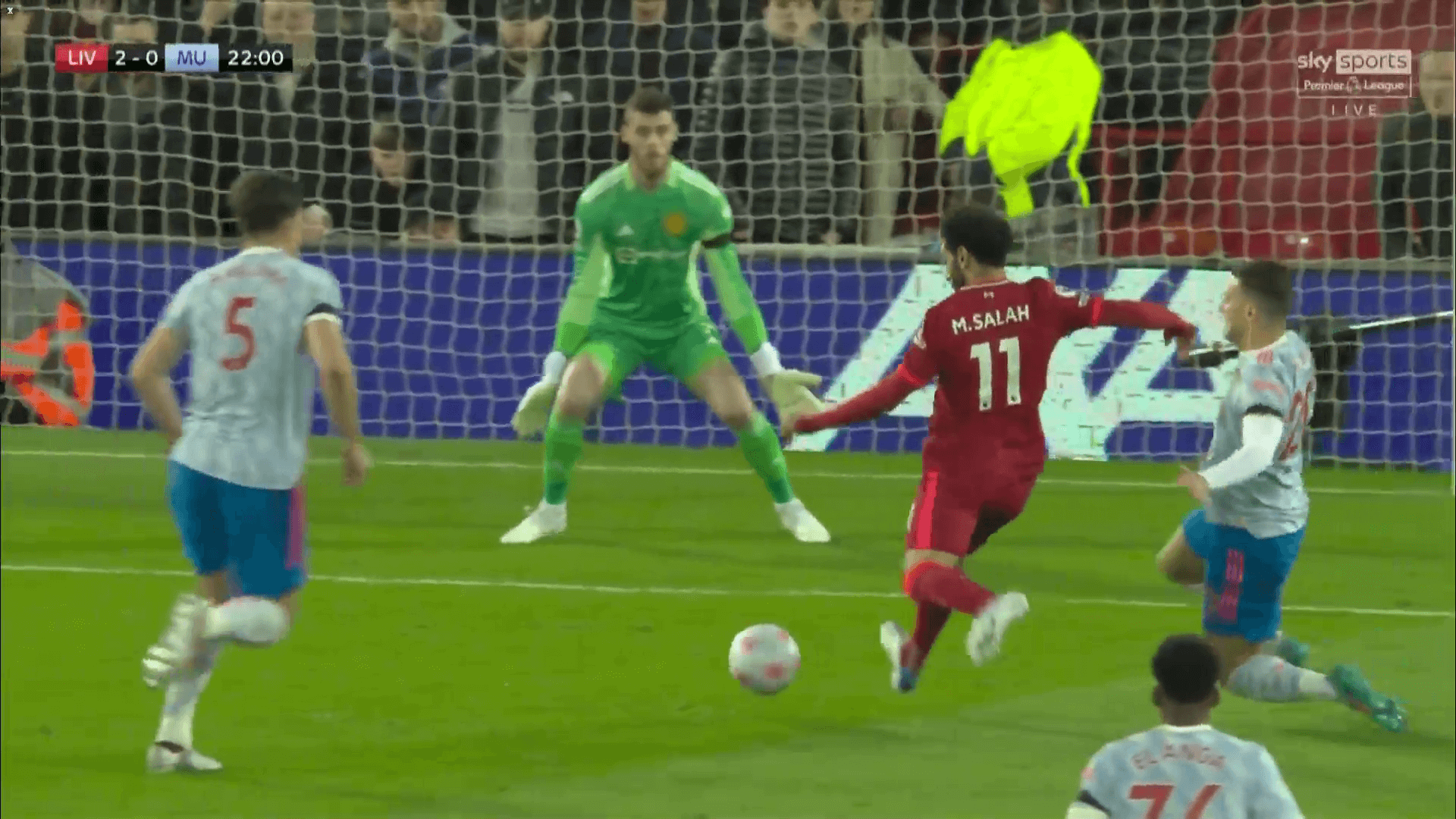
“De Gea helpless as he’s watching the hopeless in front of him,” Gary Neville, on Sky Sports, summarised it well at the time.
